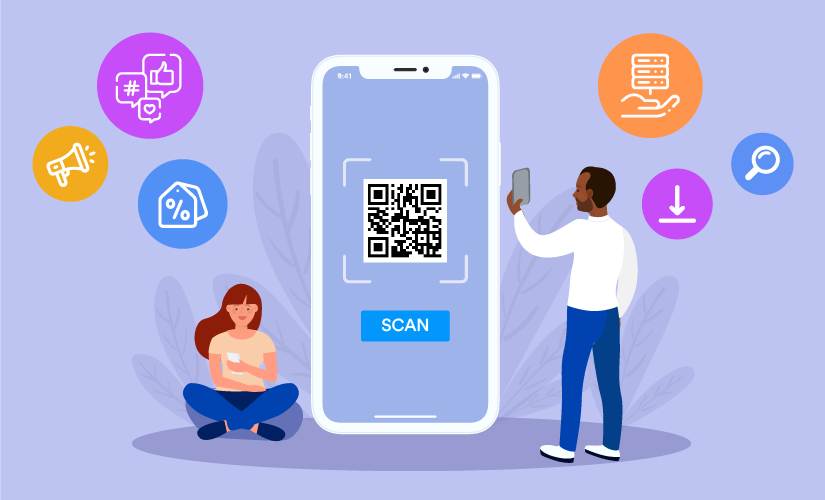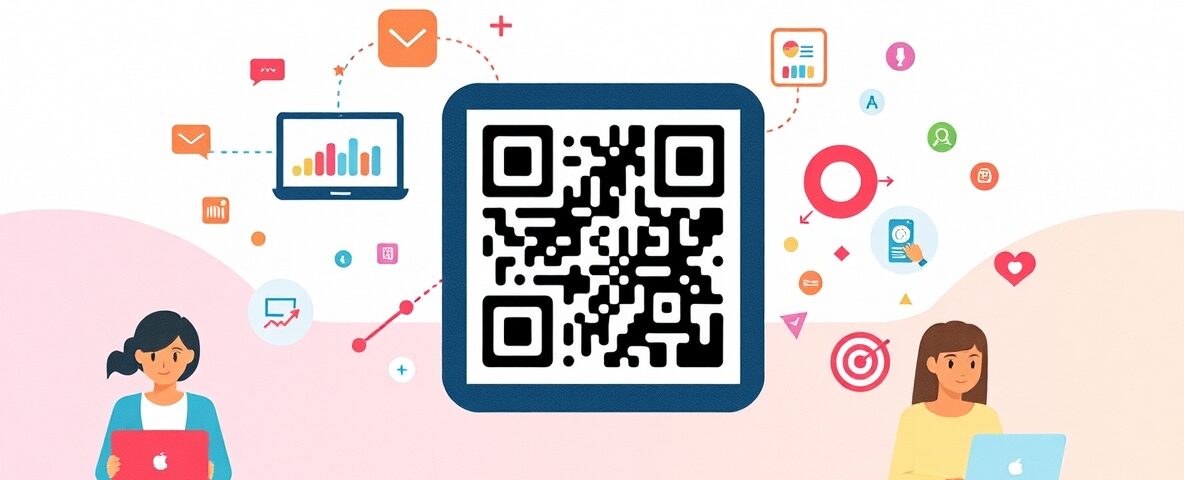
Optimizing E-commerce for Higher Conversion Rates
September 5, 2025
Brand Storytelling in Singapore Gets a Reboot with AI: Here’s What That Means for Creatives
September 5, 2025
QR codes have become a common sight almost overnight. There’s no denying QR codes are seeing an epic revival in a new touch-free world.
What is a QR Code?
QR codes are scannable barcodes that store data. In marketing, they’re commonly used to redirect users to landing pages, websites, social media profiles, or store coupons.
QR codes vary in design and function, and fall into one of the following categories — static or dynamic.
Static vs. Dynamic QR Codes
A static QR code contains information that cannot be modified once it’s live. This means any typo or misstep will require you to create a brand new one. The good news is that static codes don’t expire — so once the content is set, your work is done.
Static QR codes are ideal for storing fixed or sensitive info — think Wi-Fi passwords, employee ID numbers, or access codes. But they’re not so helpful if you need to update your data regularly.
Dynamic QR codes allow you to change your info as many times as you want. This is because the information isn’t ingrained into the code itself. Instead, it redirects users to a specific URL that can be changed at any time. For example, a restaurant can redirect users to a menu on their website.
A major benefit of dynamic QR codes is the ability to gather scanning metrics. While you can’t access personal information from users, you can see the time, location, and device used for each scan. And as marketers, we know these metrics are crucial to gauging campaign effectiveness.
How do QR codes work?
A QR code works similarly to barcodes at the supermarket. Each QR code consists of black squares and dots which represent different pieces of information. When scanned, the unique pattern on the barcode translates into human-readable data. This transaction happens in seconds.
Users must scan the code with a QR reader or scanner, although nowadays most people scan QR codes with smartphones. On the off chance your phone doesn’t have the capability, there are plenty of free apps for QR scanning like NeoReader and QuickMark Barcode Scanner.
QR Codes for Marketing
1. QR codes can help you stand out from the crowd.
Differentiating your business from your competitors is definitely a marketing 101 lesson. If used correctly, QR codes can spike the curiosity of your customers and prospects alike. Use this opportunity to link QR codes to exclusive offers or valuable content to carry that curiosity through to a sale.
2. QR codes let you target consumers on the go.
Integrate QR codes into your store signage and other print advertising. Whether you’re providing coupons for shopping in-store or an easy way to sign up for your newsletter, QR codes make it super easy for customers and prospects to access your information fast on their phones.
3. QR codes make real-life interactive like the web.
Many businesses are shifting their time and budgets to digital advertising, which is more interactive and easier to track than traditional advertising.
QR codes add an interactive component by turning static content into dynamic call-to-action buttons. From asking customers to leave a Google review to redirecting them to a branded Facebook page, you have many options to engage customers.
4. QR codes are free and easy to set up.
There are multiple resources businesses can access that will allow them to insert a landing page URL and create a QR code that will direct users to that URL with the click of a button. Some sites allow you to set up QR codes in a matter of minutes and provide you with proper image formats to use in your designs.
QR codes are certainly having a moment in the marketing sphere. If you’re thinking about adding them to your strategy, remember that the best practice is to create value. Make sure each code leads to a source of value — such as a coupon or promotion — and requires as few clicks as possible.


